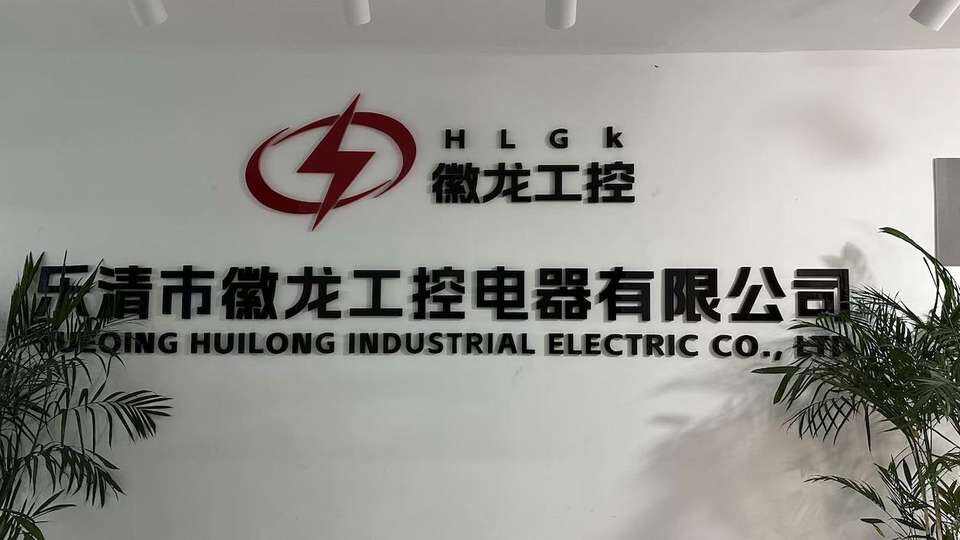What is a Single Solid State Relay?
Defining Solid State Relays (SSRs)
A Solid State Relay (SSR) is an electronic switching device that controls electrical loads without using moving parts. This is a stark contrast to traditional relays, which rely on mechanical movement to make or break connections. SSRs operate using semiconductor components like thyristors, triacs, or MOSFETs, allowing for silent operation and reducing mechanical wear, making them extremely reliable. Originating from the mid-20th century semiconductor advancements, SSRs have swiftly integrated into industrial applications. The evolution from basic electromechanical designs to advanced SSRs marks a significant leap in automation and control technology, underscoring their critical role in modern industries such as energy management and automation.
Key Components and Semiconductor Technology
The effective operation of a solid relay hinges on several key components: the optoisolator provides electrical isolation, the power semiconductor switch facilitates the load connection, and the heat sink manages thermal dissipation. These components work in harmony, ensuring optimal load management and signal isolation. SSRs often utilize advanced semiconductor technology, such as Silicon Controlled Rectifiers (SCRs) and triacs, to achieve this. These advancements enable SSRs to deliver consistent performance even under demanding conditions. Studies in semiconductor applications demonstrate the inherently high reliability of SSRs, which boast a longer lifespan compared to traditional mechanical relays, thanks to their ability to manage electronic loads without physical wear.
Comparison to Traditional Mechanical Relays
Solid state relays offer notable advantages over traditional mechanical relays, particularly in aspects like speed, size, and precision. SSRs can switch at much higher speeds, a crucial benefit for applications demanding rapid cycling. Unlike mechanical relays, which suffer from wear due to moving parts, SSRs offer a maintenance-free solution. The operational lifespan of SSRs outpaces traditional relays, as supported by industry statistics highlighting significantly reduced failure rates with SSRs. Industry experts advocate a shift towards SSRs, emphasizing their advanced control capabilities and the efficiency of electronic switching for enhanced precision in various applications. This trend reflects a broader movement in industrial settings prioritizing reliability and cutting-edge control technology.
Core Advantages of Solid State Relays
Faster Switching Speeds for Precision Control
Solid State Relays (SSRs) offer remarkable switching speeds that are typically measured in milliseconds, providing superior precision control compared to traditional mechanical relays. This high-speed switching capability results in enhanced timing accuracy and system responsiveness, crucial for applications demanding precise control such as robotics and industrial automation. Real-world examples underscore the advantages of using SSRs for rapid control, especially in industries focused on automation and precision. For instance, robotics systems benefit significantly from SSRs' ability to facilitate quick adjustments and actions, leading to improved operational efficiency.
Enhanced Reliability and Longevity
One of the standout features of SSRs is their superior reliability and extended lifespan attributable to the absence of mechanical parts, reducing wear and tear. Data indicate that SSRs generally have a longer average lifespan compared to mechanical relays, primarily due to their design which minimizes failures from environmental factors like vibration and humidity. Insights from engineers further highlight the minimal maintenance requirements of SSRs, translating into lower maintenance costs and reduced downtime. Their robust design not only enhances reliability but also ensures consistent performance in varied operational conditions.
Energy Efficiency and Reduced Maintenance
SSRs are renowned for contributing to energy efficiency through lower power consumption compared to traditional relays. This is largely due to reduced heat generation, which significantly enhances energy savings. Maintenance cost comparisons also favor SSRs, with data supporting their minimal upkeep requirements. Case studies reveal substantial savings and operational efficiency achieved by companies following SSR implementation. These financial benefits, coupled with environmental advantages, make SSRs an attractive choice for businesses seeking sustainable and cost-effective solutions. Their energy-efficient profile aligns with global trends moving toward greener technologies.
For further exploration of SSRs, you can consider specific products from notable manufacturers such as the Omron Corporation's G3NA and G3MB series or Crydom's D1D and D2D, which offer various features tailored to enhance performance in demanding applications.
How Single Solid State Relays Work
Optoelectronic Isolation Principles
Optoelectronic isolation is a cornerstone of SSRs’ functionality, ensuring electrical isolation between control and load circuits. This process involves the use of optoisolators, which employ light to transmit electrical signals, maintaining safety and reducing noise interference. Unlike traditional electrical isolation methods, optical isolation minimizes electromagnetic interference, crucial in sensitive industrial environments. The safety standards, such as those outlined by various industry safety certifications, emphasize isolation’s critical role in mitigating electrical hazards, thus validating the importance of optoelectronic isolation in SSR applications.
AC/DC Voltage Handling Capabilities
One of the significant features of SSRs is their ability to handle both AC and DC voltages, making them versatile in various applications. SSRs are designed to accommodate specific voltage handling ranges for AC and DC, unlike their mechanical counterparts, which often falter under improper conditions leading to failures. Certain sectors, such as industrial automation and transportation, illustrate the critical needs for precise voltage management in both AC and DC systems. Data shows that SSRs significantly outperform mechanical relays in these environments, providing reliable and adaptable solutions for complex electrical systems.
Integration with Control Systems and Photoelectric Sensors
SSRs integrate seamlessly with modern control systems, enhancing automation and operational efficiency. They work in tandem with photoelectric sensors to provide precision in control, vital for applications like smart factories and commercial buildings. In such scenarios, SSRs act as intermediary devices that facilitate smoother transitions and accurate signal processing, pivotal in automation frameworks. Statistical data reveals marked improvements in system efficiency when SSRs are paired with advanced sensors, underscoring their role in driving innovation and reliability in industrial settings. This integration exemplifies how SSRs not only simplify control processes but also contribute to sustainable automation systems.
Practical Applications in Modern Systems
Industrial Automation and Motor Control
Solid-state relays (SSRs) are revolutionizing industrial automation by ensuring efficiency and reliability in various processes. They are particularly transformative in motor control applications where precision and dependability are vital for productivity. With SSR applications in motor control, industries can achieve reduced downtime and increased operational longevity. For instance, case studies highlight that manufacturing processes utilizing SSRs see significantly lower failure rates compared to those reliant on mechanical relays. This reduction in failure rates not only boosts productivity but also reduces maintenance costs, reinforcing SSRs as a critical component in modern industrial setups.
HVAC Systems and Temperature Regulation
SSRs play an essential role in optimizing HVAC systems, controlling temperature regulation with remarkable precision. Employing solid relays in HVAC applications can result in significant energy savings by minimizing energy losses during operation, enhancing the overall system efficiency. They provide the flexibility to synchronously control both heating and cooling set points, ensuring energy is utilized efficiently while maintaining optimal comfort levels. Evidence supports their integration with modern building management systems leading to increased efficiency, reduced energy consumption, and improved occupant comfort, illustrating the value SSRs bring to HVAC systems.
Renewable Energy and Smart Grid Solutions
In the realm of renewable energy, SSRs are indispensable for enhancing the effectiveness and reliability of energy systems such as solar and wind power. Solid state relays are integrated into smart grid technologies where their durability and high-speed switching markedly improve operational efficiency. Trends indicate that SSRs are contributing substantially to growth in sectors like solar power, helping these energy management systems to handle fluctuating power demands. Research underscores the anticipated growth in renewable energy sectors can be attributed to innovations and efficiencies brought by SSR technologies, shaping the future of renewable and distributed energy resources.
Selecting the Right SSR for Your Needs
Load Type Considerations (AC vs. DC)
Understanding the load type is crucial for selecting the right solid state relay (SSR) for your applications. SSRs for AC and DC loads differ significantly in specifications and performance characteristics. It's essential to match the SSR to the specific load type to optimize performance and prevent failures. For instance, AC SSRs are commonly used in applications like lighting control and motor systems, while DC SSRs are ideal for battery-powered devices and solar applications. An expert's recommendation would be to assess the common applications associated with different SSR configurations to make informed choices.
Voltage and Current Rating Requirements
Accurately determining the voltage and current ratings of SSRs is critical for their effective operation. Inappropriate ratings may lead to overheating, system failure, or reduced life span. Additionally, adhering to industry safety standards regarding these ratings helps clients make the right decisions in their selection process. There are numerous instances where incorrect ratings have led to operational mishaps, emphasizing the importance of choosing the proper specifications. For example, using an SSR with insufficient voltage ratings can result in catastrophic failures, impacting overall system reliability.
Thermal Management and Environmental Factors
Thermal management is key to ensuring the longevity and reliability of solid state relays. Proper handling of heat generated during operation is essential to maintain efficiency. Environmental factors, such as humidity and dust, also play significant roles in the performance of SSRs. Utilizing heat sinks and additional cooling methods can improve SSR efficiency under varying conditions. Data show that environmental design improves overall system reliability. As SSRs are often employed in challenging environments, incorporating robust thermal management strategies leads to increased system performance and resilience.
FAQ
What are the main advantages of Solid State Relays over mechanical relays?
Solid State Relays offer faster switching speeds, enhanced reliability, longer lifespan, energy efficiency, and reduced maintenance compared to mechanical relays.
Can Solid State Relays handle both AC and DC voltages?
Yes, Solid State Relays are designed to handle both AC and DC voltages, making them versatile for various applications.
How do Solid State Relays contribute to energy efficiency?
SSRs contribute to energy efficiency through lower power consumption and reduced heat generation, leading to substantial energy savings and operational efficiency.







